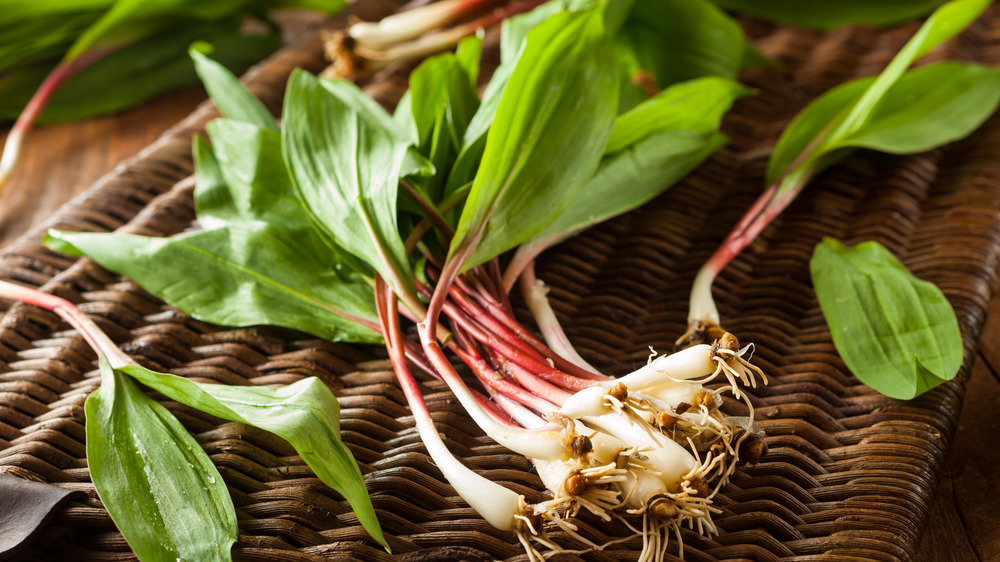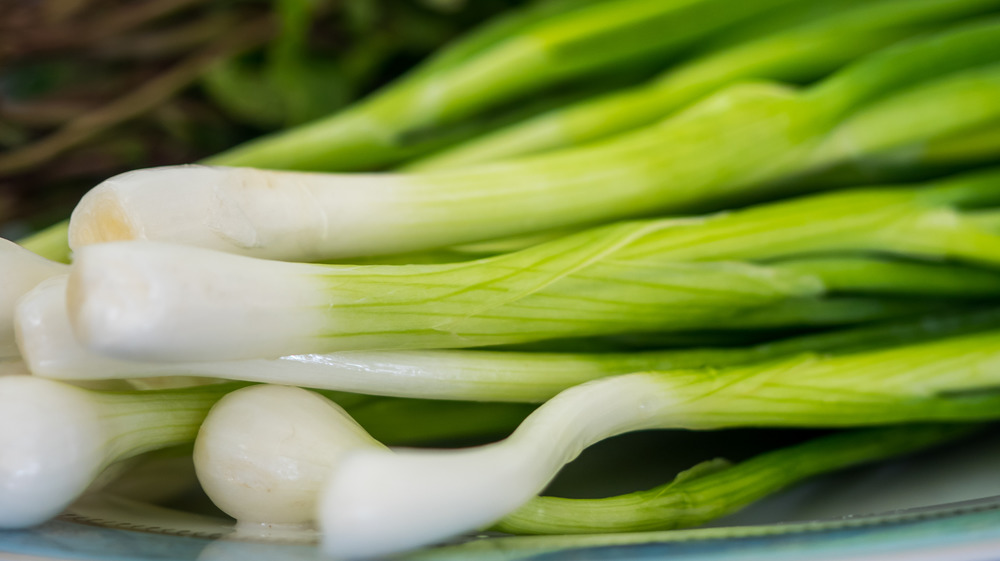Ramps Vs. Scallions: What's The Difference?
Thanks to their long history and widespread availability, most of us have seen and tasted scallions. These green and white alliums have a spicy, onion-like taste that make them great for garnishes, stir-fries, and even grilling and eating them on their own (via Bon Appetit). Additionally, you can find scallions year-round in a variety of cooking cultures and can easily identify them thanks to their signature green cylindrical tops and round white bases capped off with a few dangling roots (via The Kitchn).
During certain times of the year, you might find a special ingredient that looks and smells generally similar to scallions called ramps, and if you can grab a few, you're in for a treat! According to Eater, ramps look generally like scallions, but feature flat, green leaves instead of the cylindrical green tops that scallions have. You might also have a hard time coming across these vegetables, as they have a very short growing season; if you want to score a few of these shoots, you have to forage for them. Due to the elusive nature of this pungent vegetable, you might pay anywhere from $20 for a pound of ramps, all the way up to $162 for a five-pound bundle. If the scarcity and exquisiteness ramps have piqued your interest, just wait until you taste one.
How do you use ramps and scallions in cooking?
If you can get your hands on some ramps during their growing season, you'll have access to a unique vegetable with a slight onion taste and a garlic aroma that can get pickled, cooked with eggs, or even fried in bacon grease (via Eater). They can stand up to heat and make an excellent side dish if you grill them, or can even blend them with pine nuts and parmesan to make a ramp-based pesto (via Bon Appetit).
While ramps sound incredibly versatile in the kitchen, wait until you really start using scallions. Due to scallions' light onion flavor that won't overpower a dish when used raw, these vegetables can top off soups, get baked into bread, turn into sauces, and even go in sandwiches (via The Kitchn).
When the urge strikes, make sure to take advantage of scallions and ramps in your next dish. By practicing with both ingredients, you can easily learn the ins and outs of each vegetable and identify which recipes suit each allium. Just keep an eye out for ramps while you see them — once their season comes to an end, you have to wait a whole year to grab a few again.

